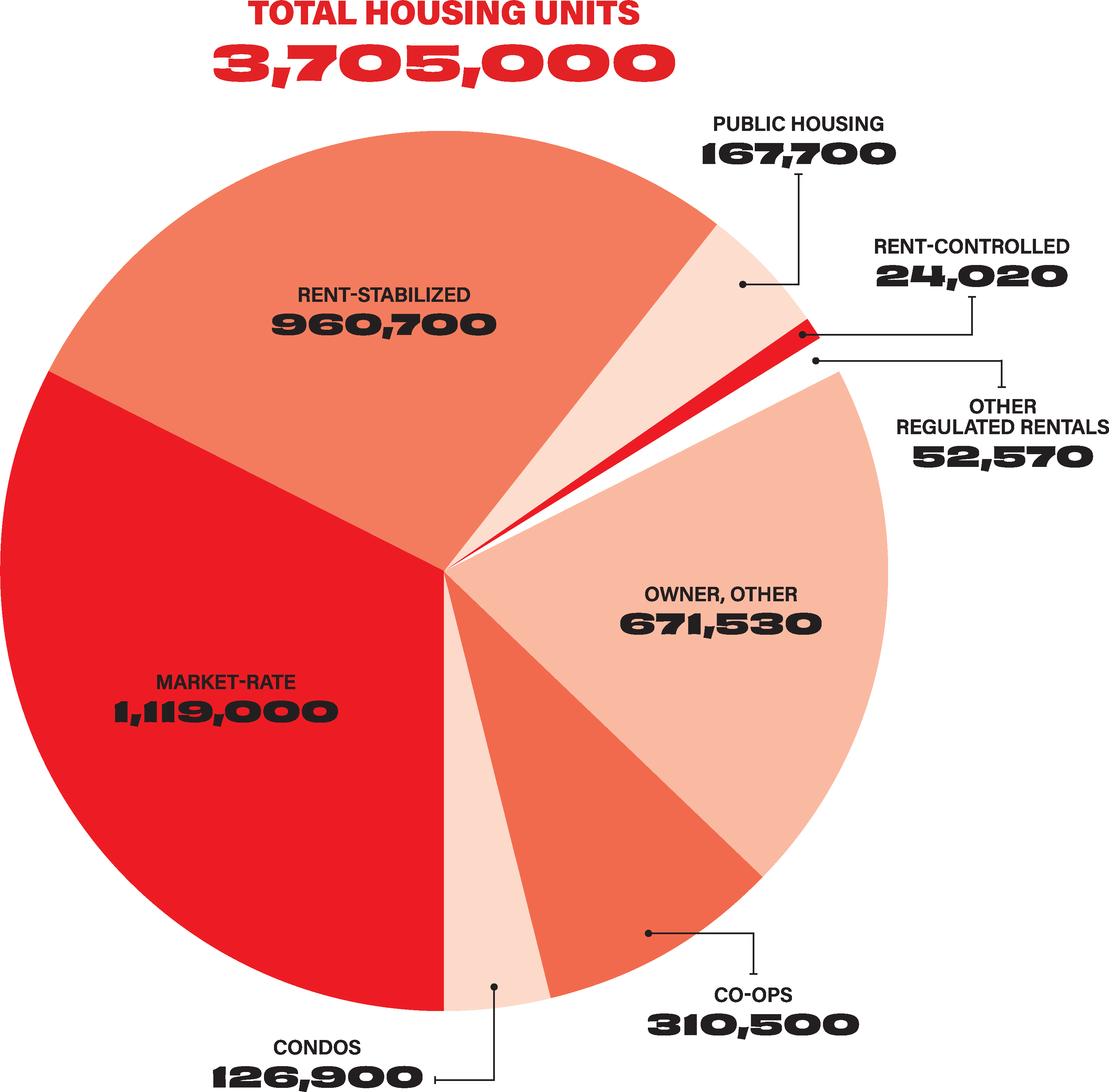Former Gov. Andrew Cuomo recently debuted “Zohran’s Law,” a means-tested housing proposal and dig at Democratic mayoral nominee Zohran Mamdani. His plan would prohibit landlords from leasing rent-stabilized units to wealthier occupants. The plan followed days of Cuomo’s online ridicule of Mamdani for living in a $2,300 rent-stabilized 1-bedroom apartment in Queens while earning $142,000 as an Assembly member. The law, although inspired by Mamdani, would not apply to him as the bill would not evict tenants whose incomes increase after moving in. Mamdani’s rent-freeze policy, by contrast, has been central to his campaign and would halt increases on the city’s nearly 1 million rent-stabilized units.
Renters occupy more than two-thirds of all housing in the city, and the New York City Housing and Vacancy Survey categorizes five types of rental units: market-rate, rent-controlled, rent-stabilized, public housing and other rent-regulated units.
Market-rate housing has rents that are determined by landlords and makes up the single largest category of housing in the city. Rent-stabilized units prohibit landlords from raising rents independent of the New York City Rent Guidelines Board, whose nine members are appointed by the mayor and set annual rent increases for these units. Rent-controlled apartments now represent a very small proportion of the city’s rental stock and generally consist of units in buildings built before Feb. 1, 1947 where the tenant has continuously occupied the unit since before July 1, 1971.
Public housing units are owned and operated by the New York City Housing Authority. The housing survey considers Mitchell-Lama developments and certain subsidized developments as “other rent-regulated units,” not public housing.
Home ownership is less common but still accounts for over 1 million units throughout New York City. The majority of those units, categorized as “other” ownership, are one-family, two-family and multifamily units that are owner-occupied housing.
There are also many co-op units in which residents buy shares in a corporation that owns the building rather than individual units, and condos, in which occupants own their individual unit and often share common spaces or amenities with other people.



